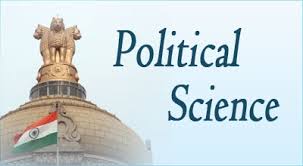W.B.C.S. Examination Notes On – Stages In Indian Communalism – Political Science Notes.
India is a land of diversity. And it is known for lingual, ethnic, cultural and racial diversity. As, we have discussed above, communalism in India is a modern phenomenon, which has become threat to India’s Unity in Diversity. We will see the various stages.Continue Reading W.B.C.S. Examination Notes On – Stages In Indian Communalism – Political Science Notes.
-
First stage was rise of nationalist Hindu, Muslim, Sikh, etc. with only first element of communalism as discussed above. Roots of this were led in later part of 19th century with Hindu revivalist movement like Shuddhi movement of Arya Samaj and Cow protection riots of 1892.
On the other hand movements like Faraizi movement started Haji Shariatullah in Bengal to bring the Bengali Muslims back on the true path of Islam, was one of the religious reform movement which had bearing on communalism in 19th century. Later people like Syed Ahmed Khan, who despite of having scientific and rational approach, projected Indian Muslims as a separate community (qaum) having interest different from others.
-
Second stage was of Liberal communalism, it believed in communal politics but liberal in democratic, humanist and nationalist values. It was basically before 1937. For example organisations like Hindu Mahasabha, Muslim League and personalities like M.A. Jinnah, M M Malviya, Lala Lajpat Rai after 1920s
- Third was the stage of Extreme Communalism, this had a fascist syndrome. It demanded for separate nation, based on fear and hatred. There was tendency to use violence of language, deed and behaviour. For example Muslim League and Hindu Mahasabha after 1937.
It spread as a by-product of colonialism, economic stagnations and absence of modern institutions of education and health. These factors caused competition, people started using nepotism (patronage bestowed or favouritism shown on the basis of family relationship, as in business and politics), paying bribes to get job, etc. Short term benefits from communalism started giving validity to communal politics.
Later on, spread of education to peasant and small landlords gave rise to new middle class, as agriculture was becoming stagnant. So, these people started demanding communal representation and this way, social base for communalism widened. Middle class oscillated between anti-imperialism and communalism. Communalism, started rooting deeply, as it was an expression of aspiration and interest of middle class for less opportunity.
Further, from very beginning upper caste Hindus dominated colonial services as they adapted early to colonial structure. Because of Mughal rule and 1857 revolt, colonial government was suspicious towards Muslims and they patronised Hindus. This resulted in resentment in Muslims in late 19th century and they then formed a pressure group under Sir Sayed Ahmed Kahn to bargain as a separate community. In contrast Congress standpoint was always focused on ‘rights and freedom of individual’ not on a particular community
In several part religious distinction coincided with social and class distinction, causing communal distortion. Communal outlook was given, not by participants but by the officials, politician and journalists. In fact agrarian conflicts, did not assume communal colour until 20th century. For example- Pabna agrarian movement.
Communalism represented a struggle between two upper classes / strata for power, privileges and economic gain. For Example- In western Punjab at that time, Muslim landlord opposed Hindu moneylenders. In eastern Bengal, Muslim jotedars opposed Hindu zamindars. Later on, communalism developed as weapon of economically and politically reactionary social classes and political forces.
Please subscribe here to get all future updates on this post/page/category/website


 +919674493673
+919674493673  mailus@wbcsmadeeasy.in
mailus@wbcsmadeeasy.in







































































































